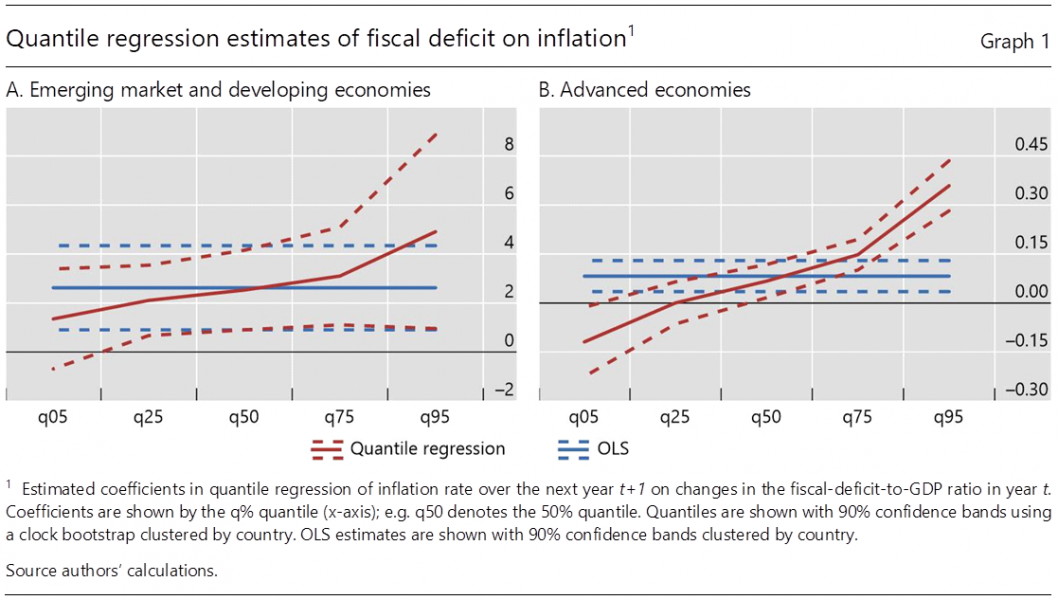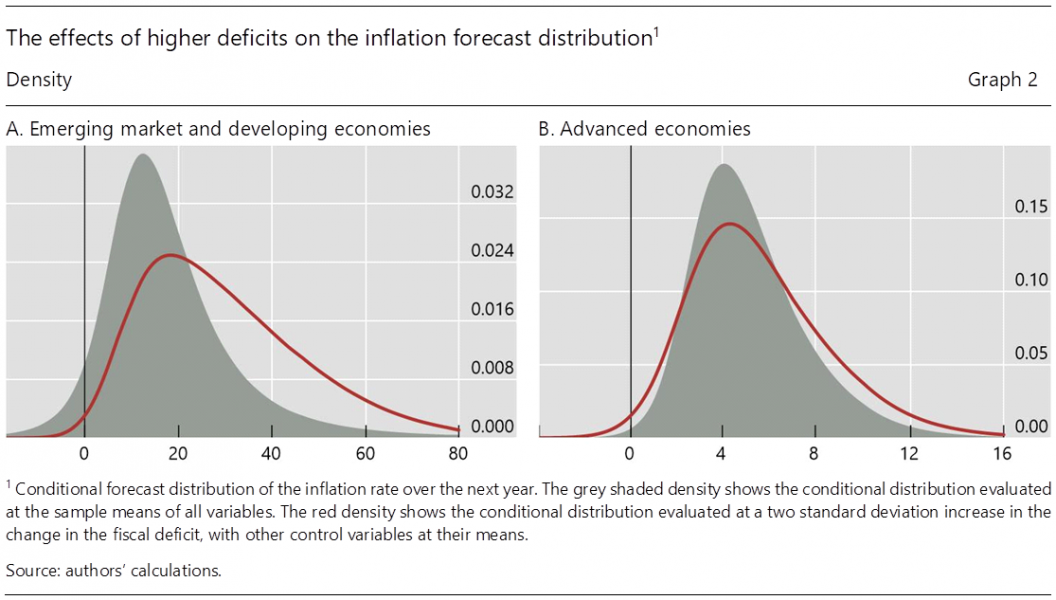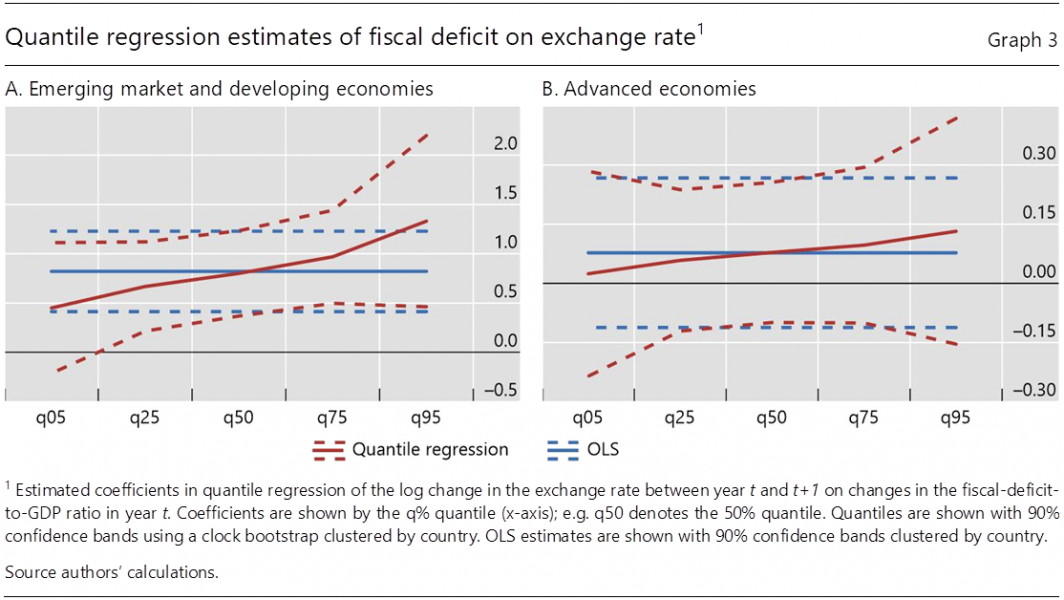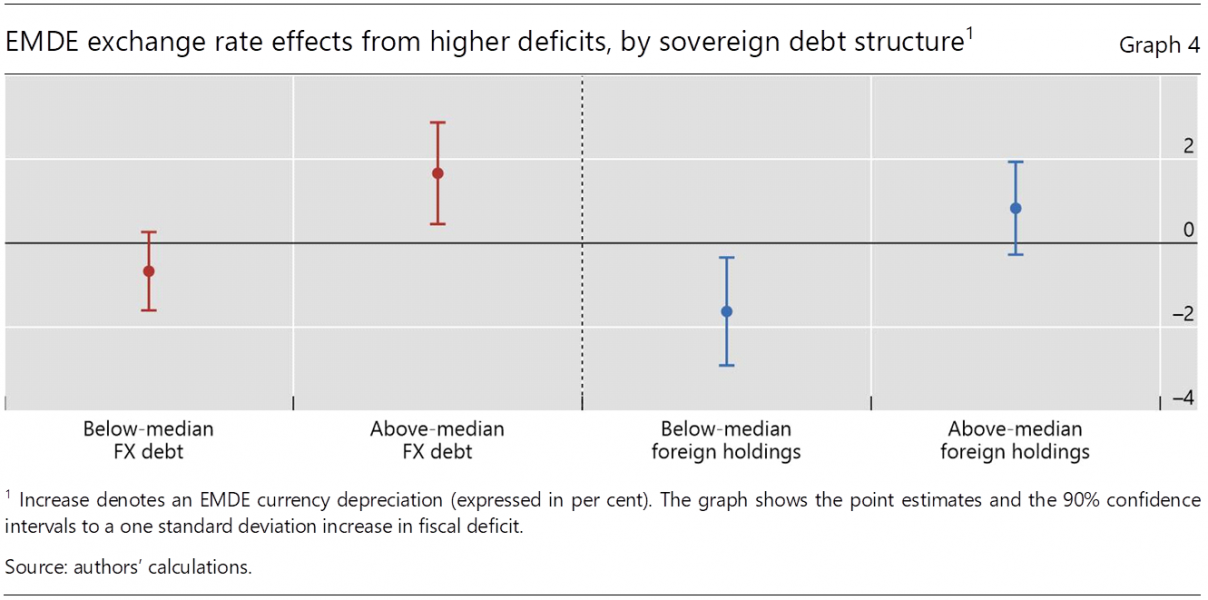References
Banerjee, R, V Boctor, A Mehrotra and F Zampolli (2023): “Fiscal sources of inflation risk in EMDEs: the role of the external channel”, BIS Working Papers, no 1110.
Alberola-Ila, E., C. Cantu, P. Cavallino, and N. Mirkov ´ (2021): “Fiscal regimes and the exchange rate,” BIS Working Papers 950, Bank for International Settlements.
Auerbach, A. J. and Y. Gorodnichenko (2016): “Effects of Fiscal Shocks in a Globalized World,” IMF Economic Review, 64, 177–215.
Banerjee, R. N., J. Contreras, A. Mehrotra, and F. Zampolli (2020): “Inflation at risk in advanced and emerging market economies,” BIS Working Papers 883, Bank for International Settlements.
Benetrix, A. S. and P. R. Lane (2013): “Fiscal Shocks and the Real Exchange Rate,” International Journal of Central Banking, 9, 6–37.
Bordo, M. D. and M. D. Levy (2021): “Do enlarged fiscal deficits cause inflation? The historical record,” Economic Affairs, 41, 59–83.
Busetti, F., M. Caivano, and D. D. Monache (2021): “Domestic and Global Determinants of Inflation: Evidence from Expectile Regression,” Oxford Bulletin of Economics and Statistics, 83, 982–1001.
Carstens, A. and H. S. Shin (2019): “Emerging markets aren’t out of the woods yet,” Foreign Affairs, 15 March. 37
Catao, L. A. and M. E. Terrones (2005): “Fiscal deficits and inflation,” Journal of Monetary Economics, 52, 529–554.
Cecchetti, S G (2008): “Measuring the macroeconomic risks posed by asset price booms,” in J Y Campbell (ed.), Asset Prices and Monetary Policy, Chicago, IL.: University of Chicago Press, pp. 9–43.
Eichengreen, B. and R. Hausmann (1999): “Exchange rates and financial fragility,” Proceedings – Economic Policy Symposium – Jackson Hole, 329–368.
Fischer, S., R. Sahay, and C. A. Vegh ´ (2002): “Modern hyper-and high inflations,” Journal of Economic Literature, 40, 837–880.
Ghosh, A. R., J. I. Kim, E. G. Mendoza, J. D. Ostry, and M. S. Qureshi (2013): “Fiscal Fatigue, Fiscal Space and Debt Sustainability in Advanced Economies,” Economic Journal, 0, 4–30.
Hausmann, R. and U. Panizza (2003): “On the determinants of Original Sin: an empirical investigation,” Journal of International Money and Finance, 22, 957–990.
Ilzetzki, E., E. G. Mendoza, and C. A. Vegh ´ (2013): “How big (small?) are fiscal multipliers?” Journal of Monetary Economics, 60, 239–254. 38
Kim, S. and N. Roubini (2008): “Twin deficit or twin divergence? Fiscal policy, current account, and real exchange rate in the U.S,” Journal of International Economics, 74, 362–383.
Lin, H.-Y. and H.-P. Chu (2013): “Are fiscal deficits inflationary?” Journal of International Money and Finance, 32, 214–233.
Lopez-Salido, J. D. and F. Loria ´ (2020): “Inflation at Risk,” Finance and Economics Discussion Series 2020-013, Board of Governors of the Federal Reserve System (U.S.).
Monacelli, T. and R. Perotti (2010): “Fiscal Policy, the Real Exchange Rate and Traded Goods,” Economic Journal, 120, 437–461. 39










